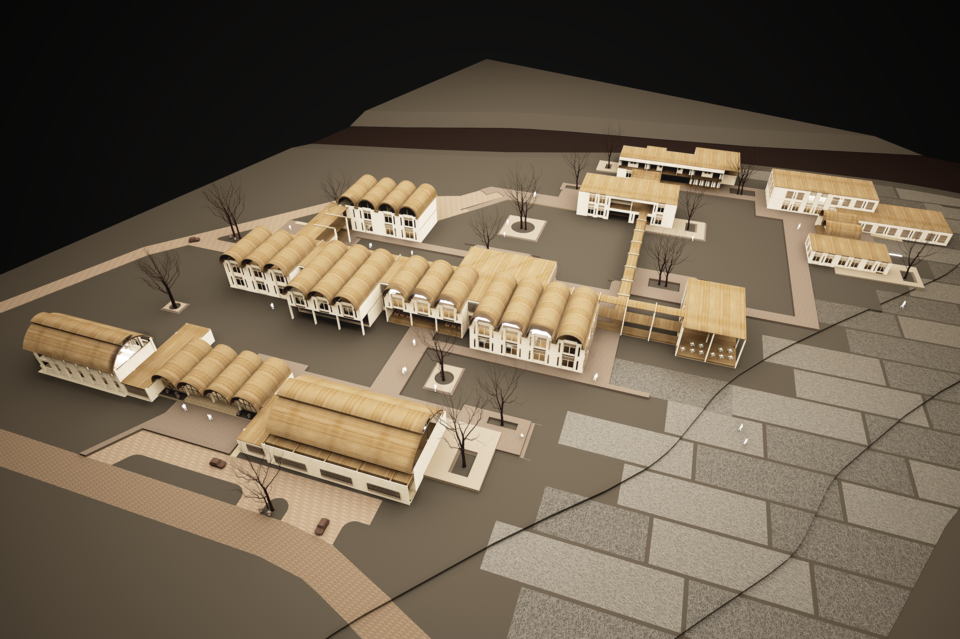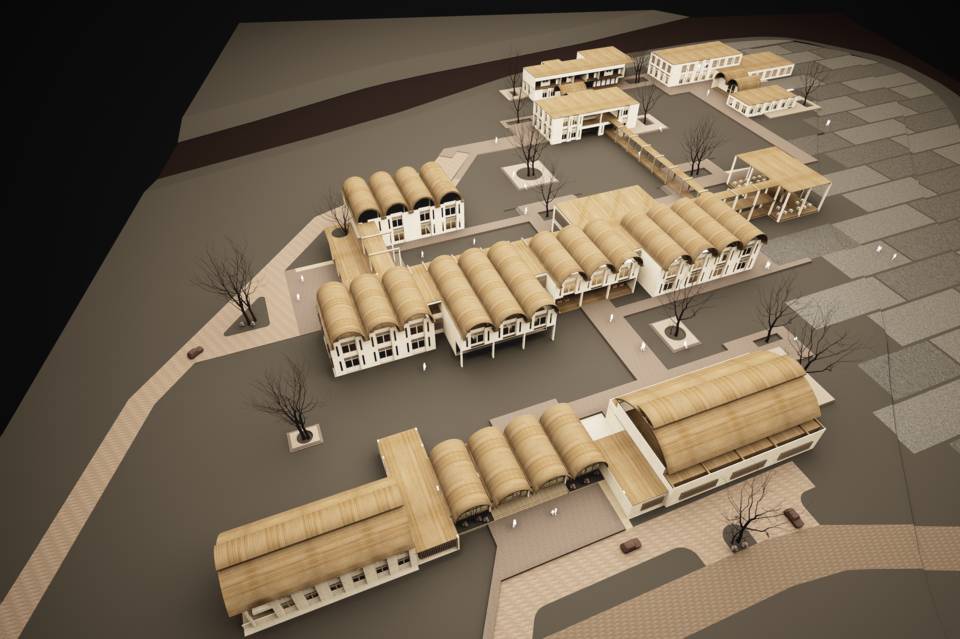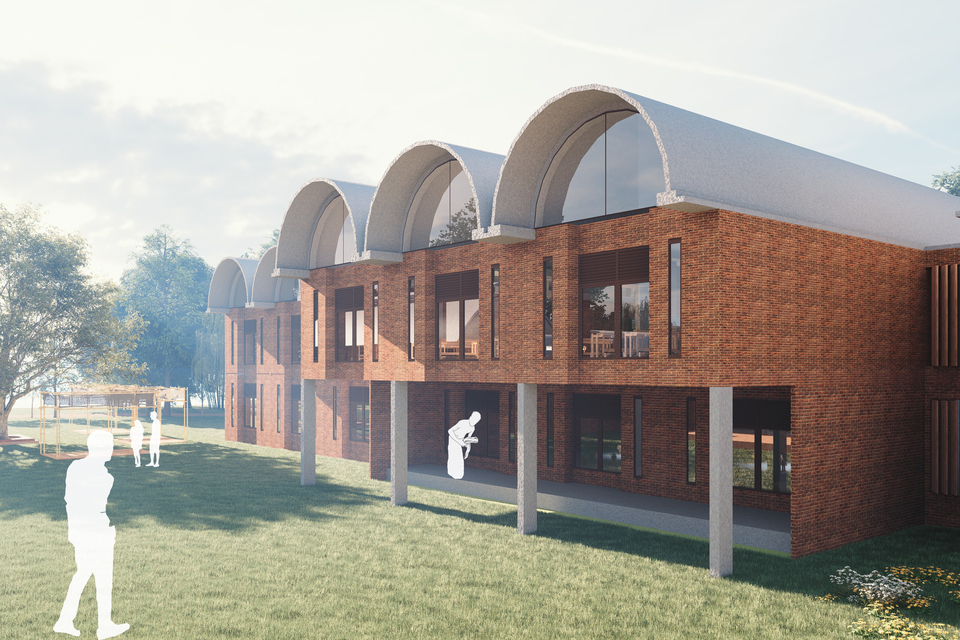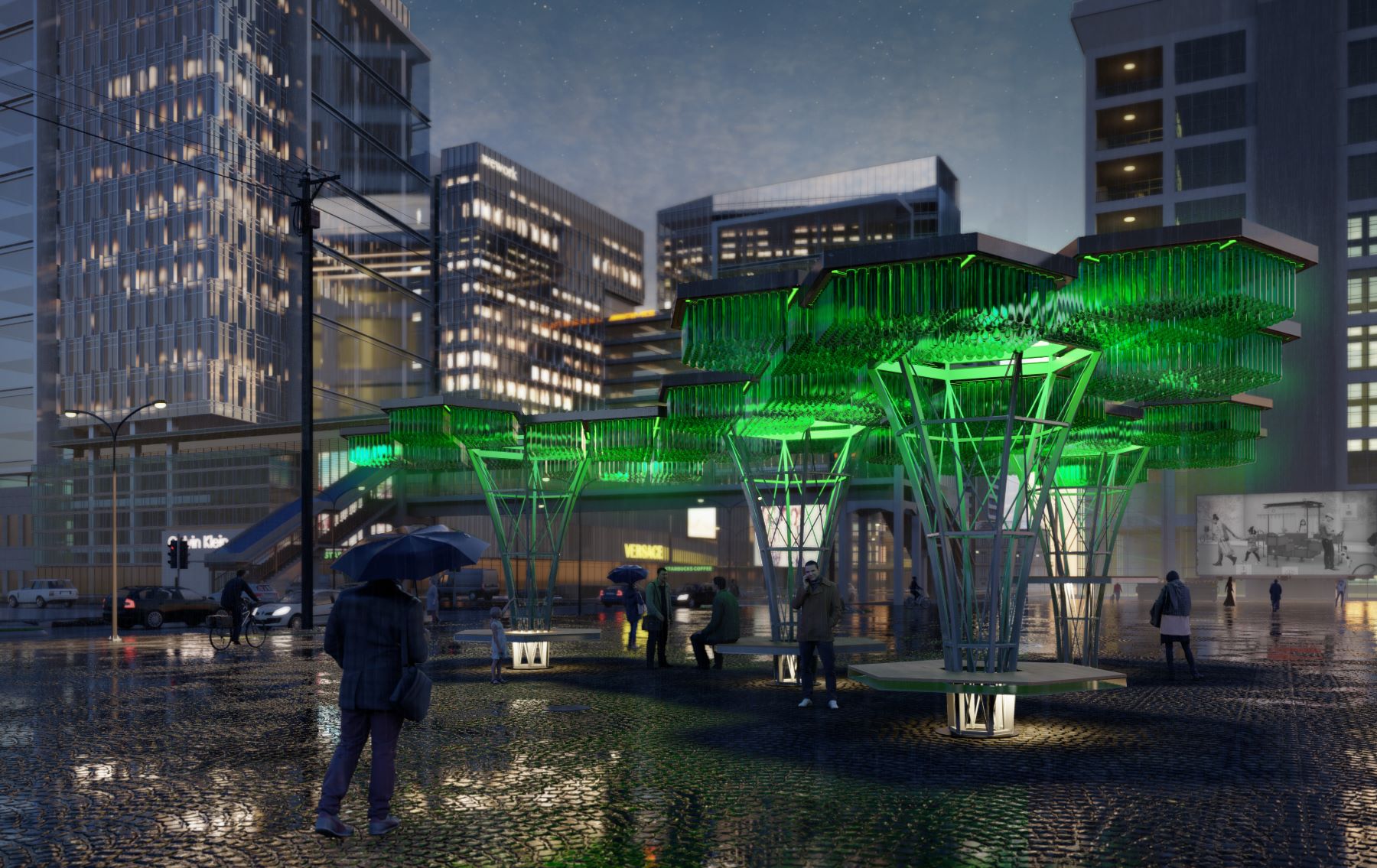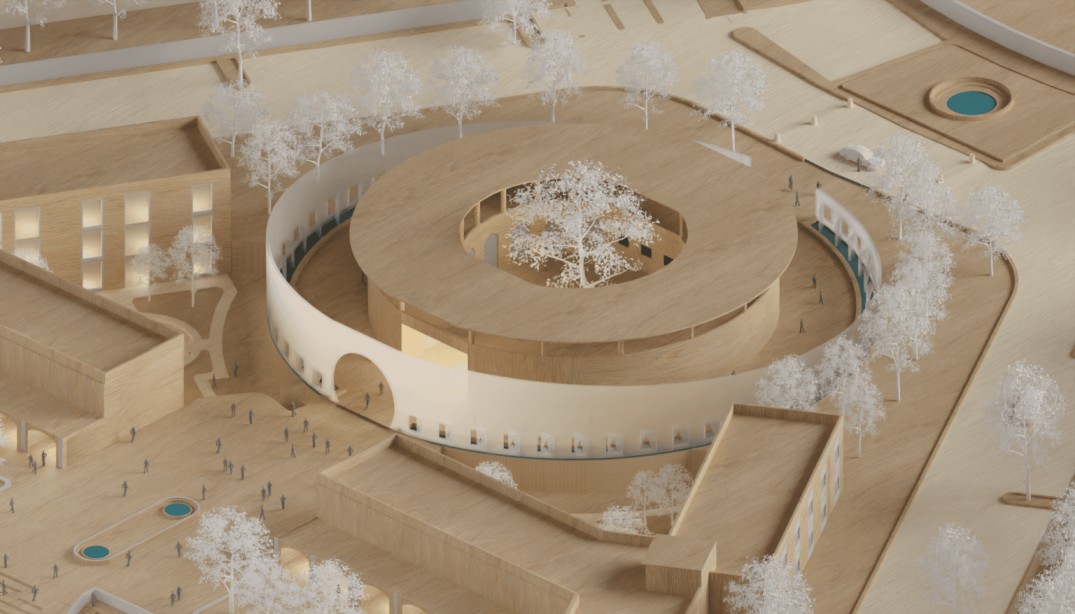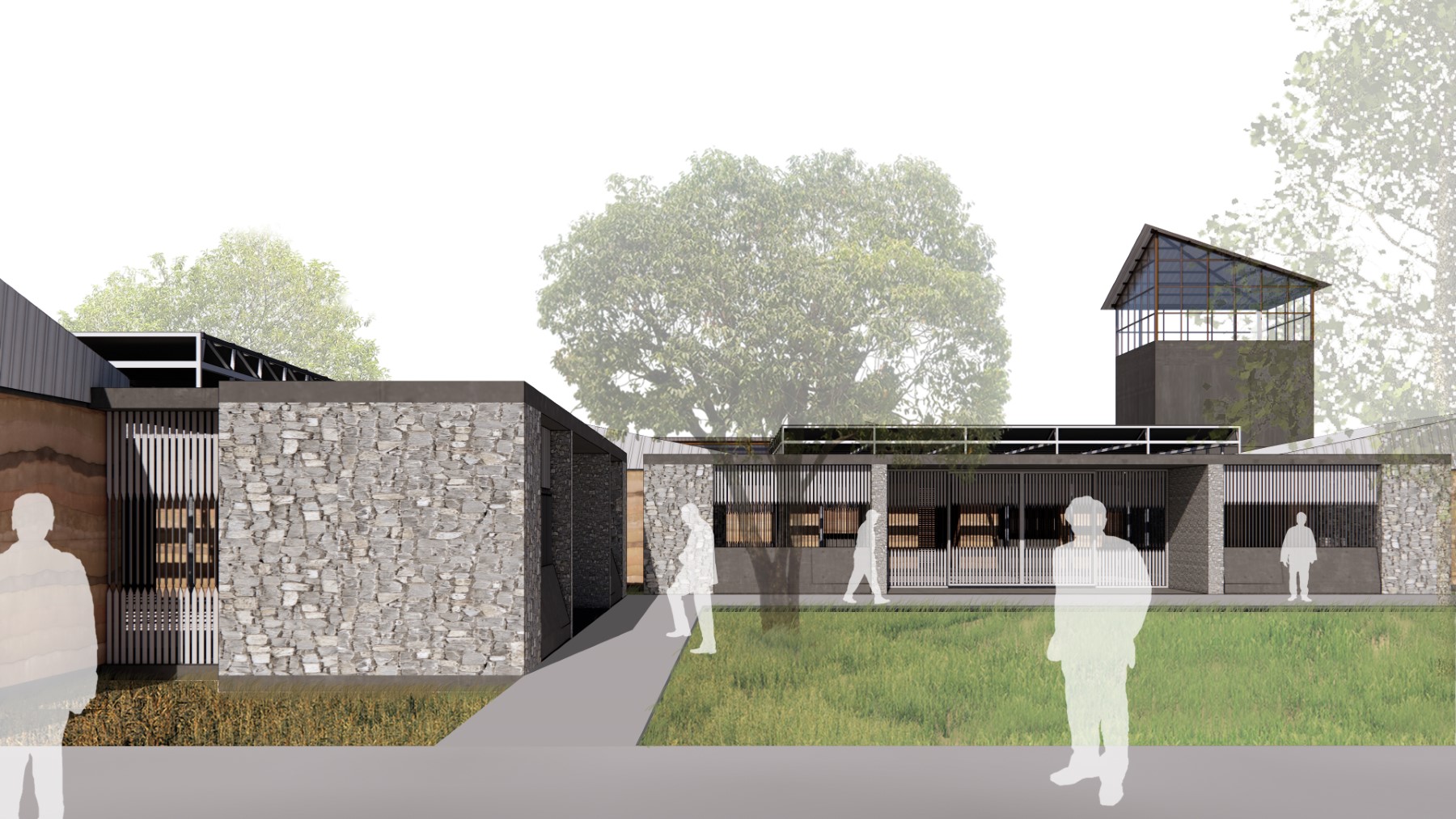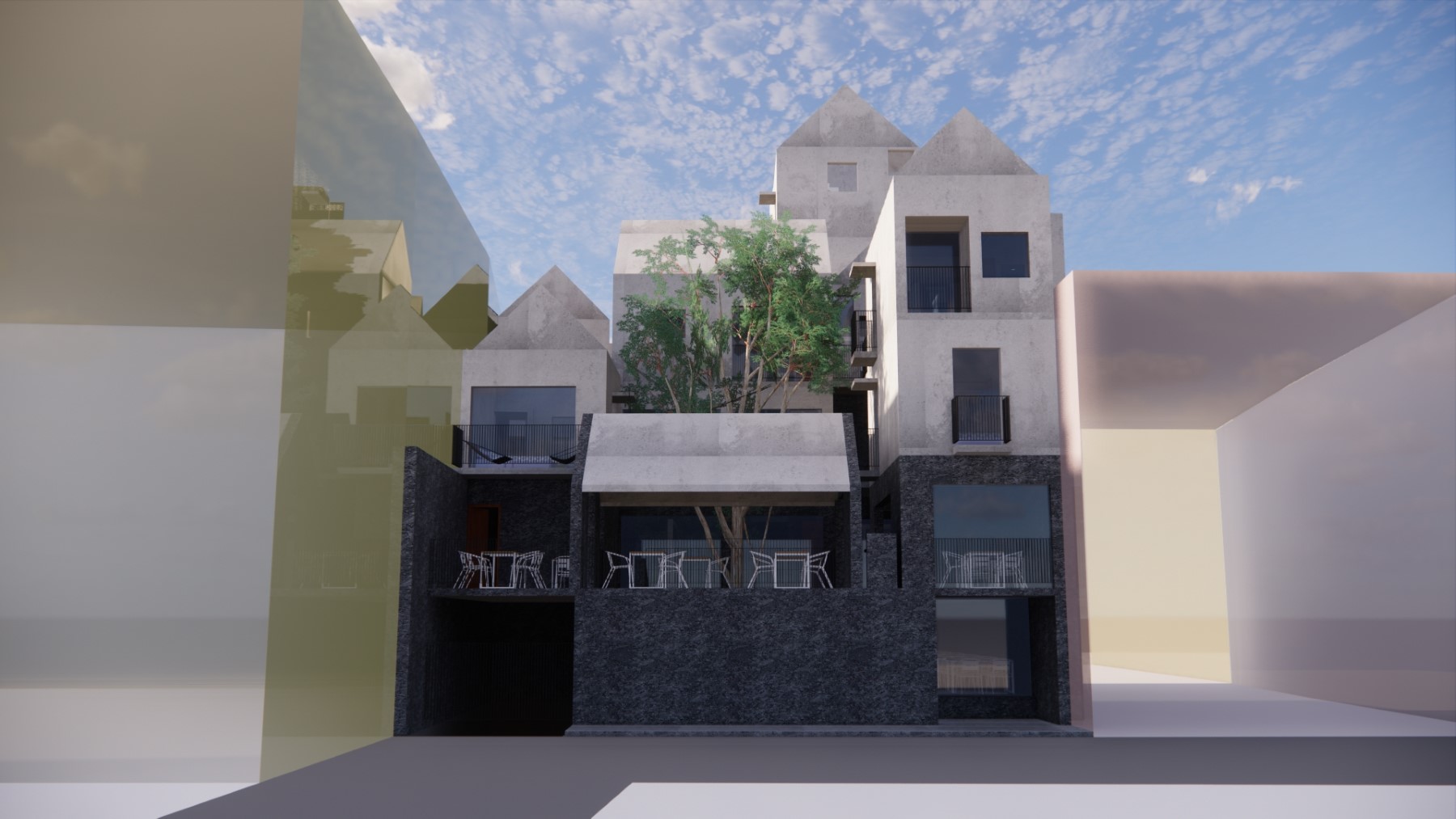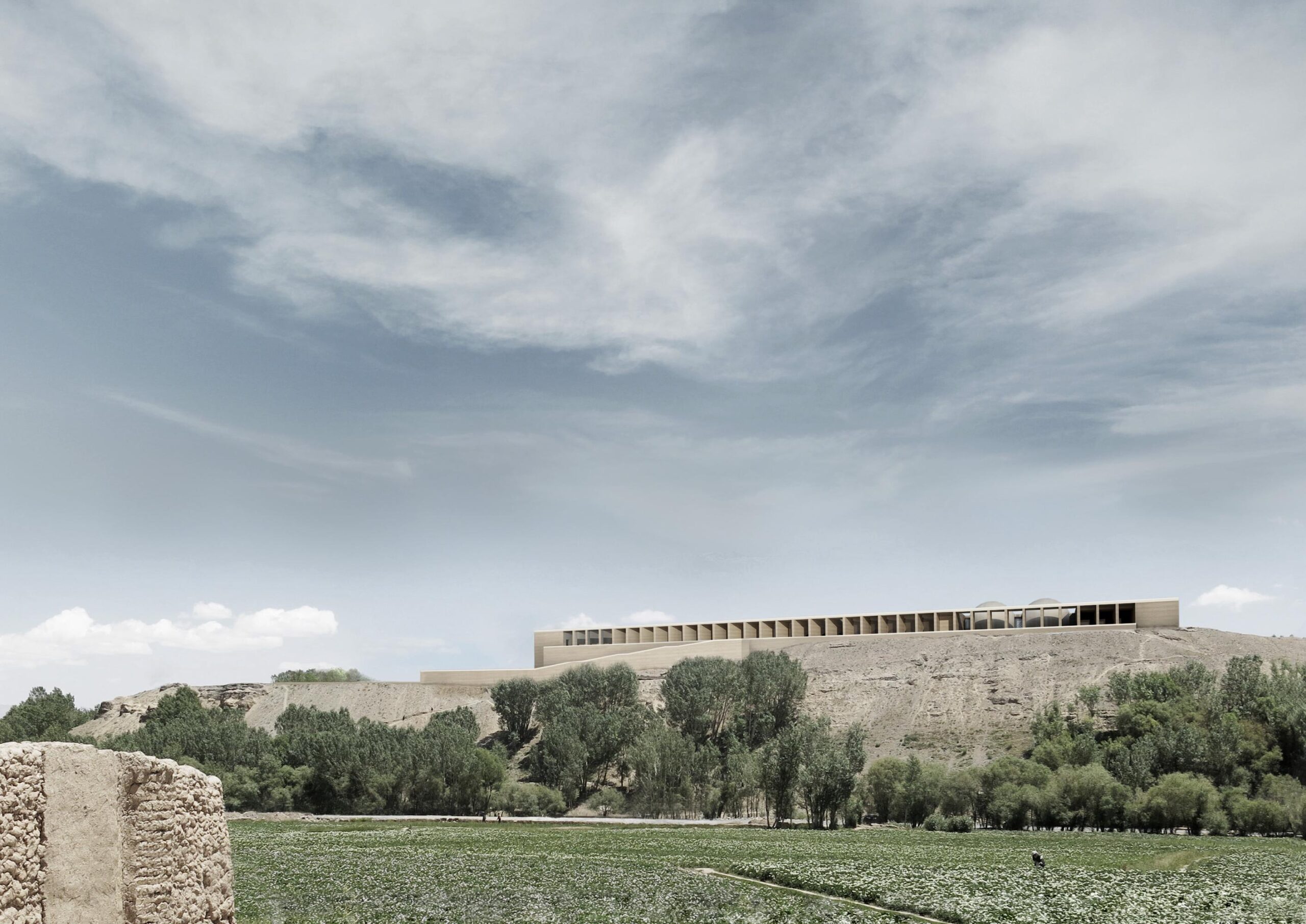“Lighter than air, a fabric so fine that you could fit it through a matchbox—such goes the legend of Bengal Muslin.” The “Revival of Muslin” project aims to reinvigorate the traditional art of muslin weaving by establishing a state-of-the-art training and research hub in Dhaka, Bangladesh. This facility is designed to blend historical craftsmanship with modern innovation, supporting local artisans and promoting sustainable practices.

Project Brief
The demand for Bengal muslin declined in the 19th century due to factors like the Industrial Revolution and stories of brutal methods allegedly employed by the British to stop production, including cutting weavers’ fingers. After 200 years, local artisans and the Bangladesh government aim to restore this rich heritage.
But creating high-quality muslin requires meticulous attention to specific environmental and technical criteria due to the delicate and intricate nature of the fabric. One of the essential conditions for muslin production is maintaining a humidity level of 60-70% to increase the elasticity of cotton fibers and prevent breakage. Moreover the yarn is so thin that it is nearly invisible to the naked eye under standard lighting conditions. And integrating advanced research with traditional weaving workshops has been challenging, but adhering to these criteria can revive and sustain the ancient art, preserving its legendary quality and beauty.
Technical information
The project prioritizes sustainability through the use of locally sourced materials, passive cooling techniques, and renewable energy systems, water reclamation( purify dyeing effluent or wastewater),water conservation methods, including rainwater harvesting and efficient irrigation systems, support sustainable site management.
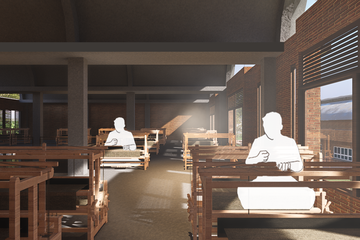
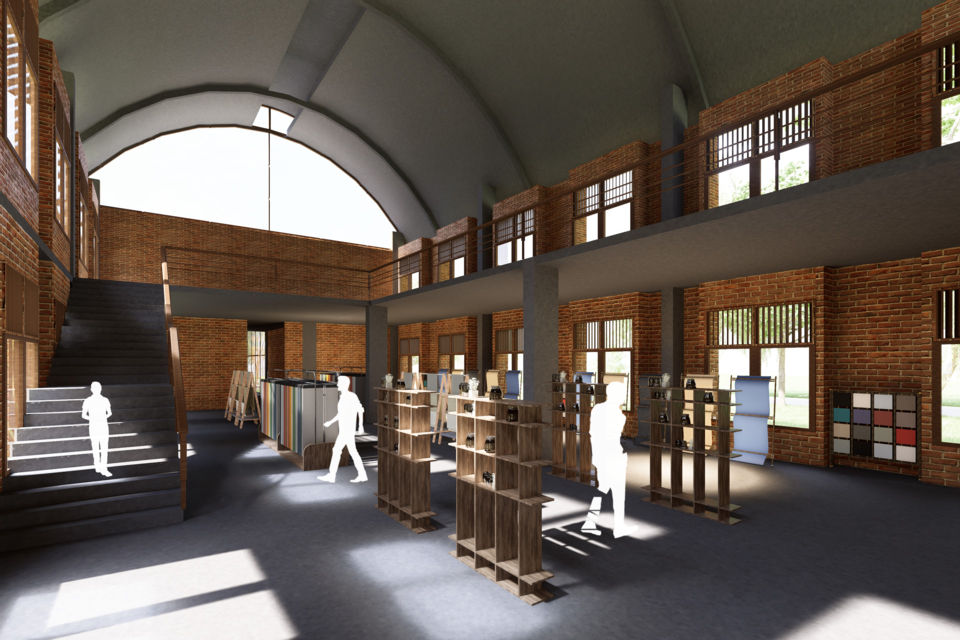
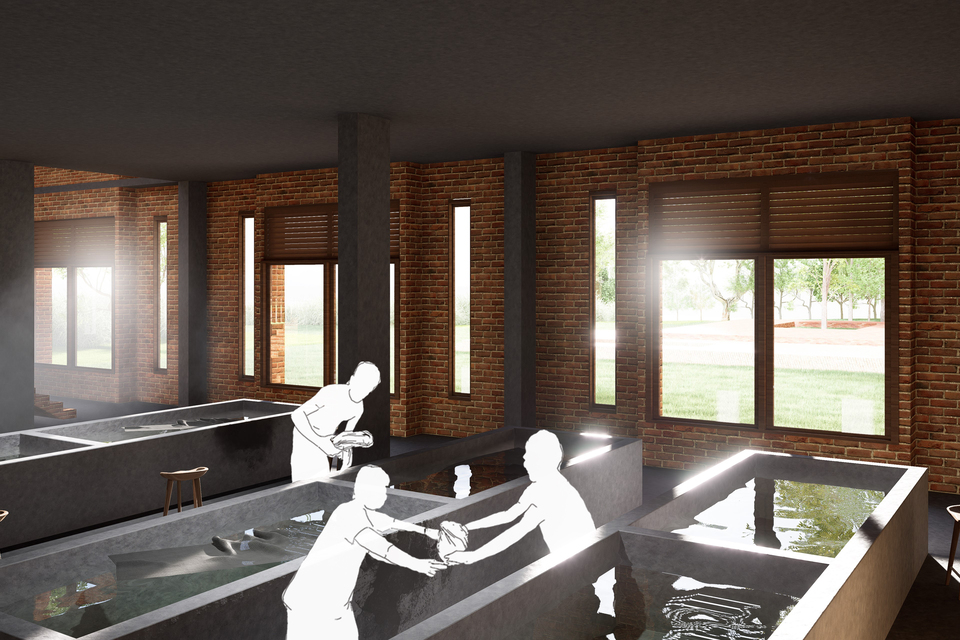
Combining sustainable material like clay bricks with polystyrene insulation offers a dual benefit. Using of clay bricks have excellent thermal mass properties. This natural regulation helps stabilize temperature fluctuations inside the workspace, creating a more comfortable and consistent environment for weaving and reducing the need for mechanical cooling systems and energy consumption.Polystyrene acts as a thermal barrier, minimizing heat transfer through walls.
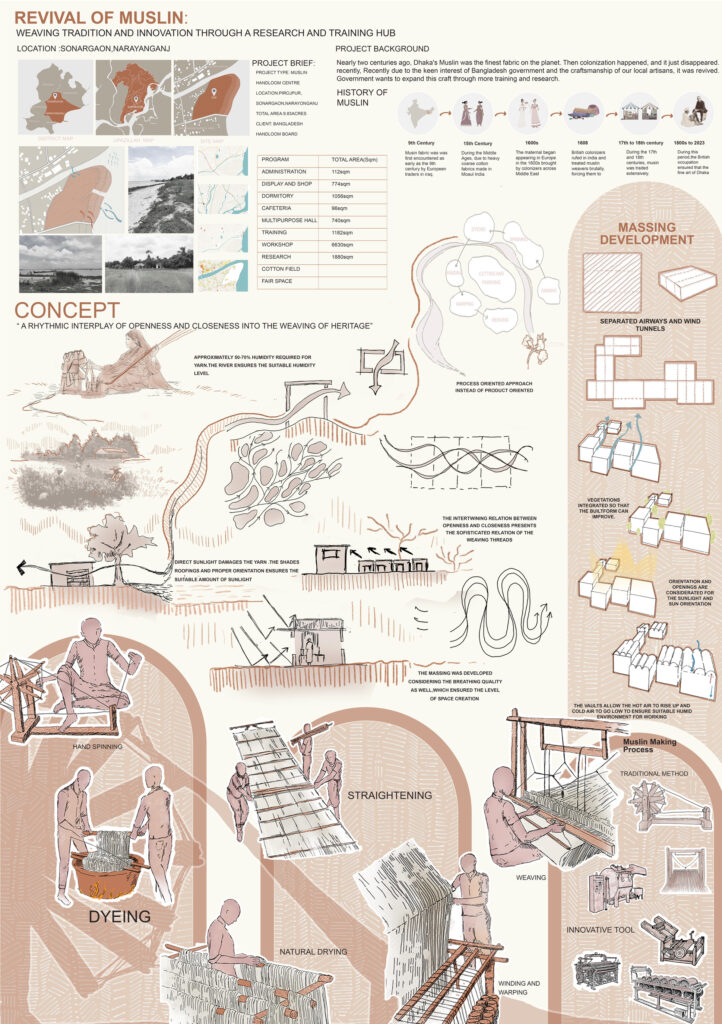
Advanced humidification systems regulate indoor humidity levels to the specific range (60-70%) needed for optimal yarn elasticity and weaving quality.
The curved shape of vaulted roofs allows natural light to penetrate deeper into the workspace, reducing the reliance on artificial lighting during daylight hours.Natural light is diffused evenly throughout the interior space, enhancing visibility without causing glare or harsh shadows.
Implementation of rain water harvesting system and water recycling systems to reuse dyeing water for processes like humidification and reduce freshwater consumption and minimize wastewater discharge, contributing to sustainable water management practices.
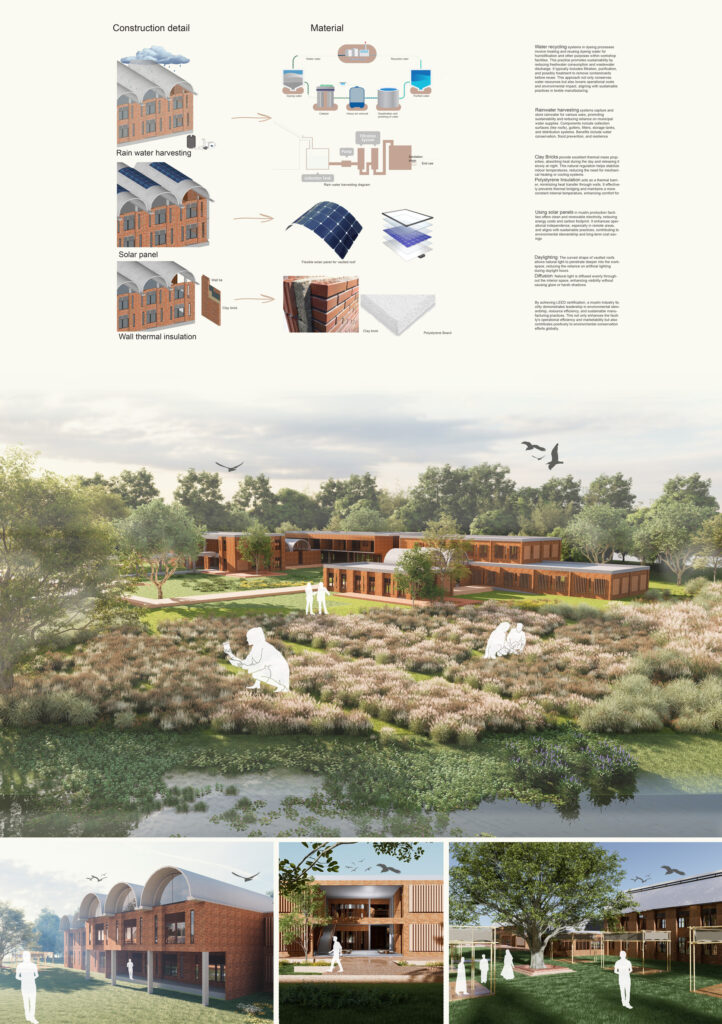

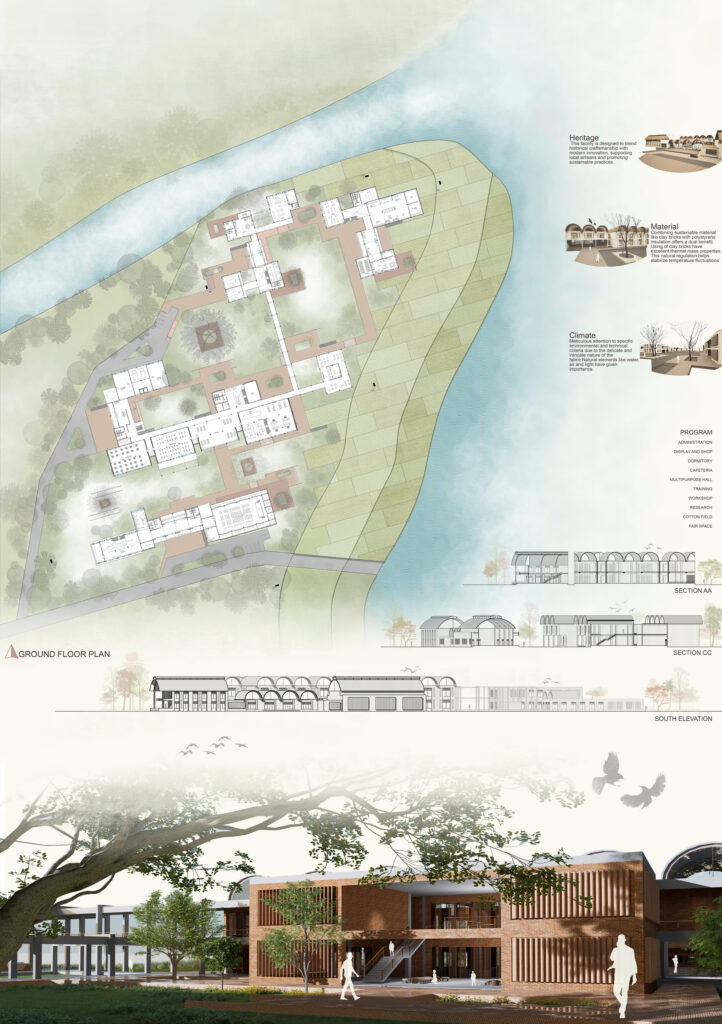
Using solar panels in muslin production facilities offers clean and renewable electricity, reducing energy costs and carbon footprint. It enhances operational independence, especially in remote areas, and aligns with sustainable practices, contributing to environmental stewardship and long-term cost savings.
Location: Narayanganj, Dhaka
Site Area: 9.83 Acre
Student Name: Rajoana Islam
Studio: Design X Studio
Guide: Dr. Farida Nilufar, Dr. Maher Niger, Zishan Fuad Choudhury, Ishrat Momtaz Badhon.
Year: 2024
University: Ahsanullah University of Science and Technology.
Model:
